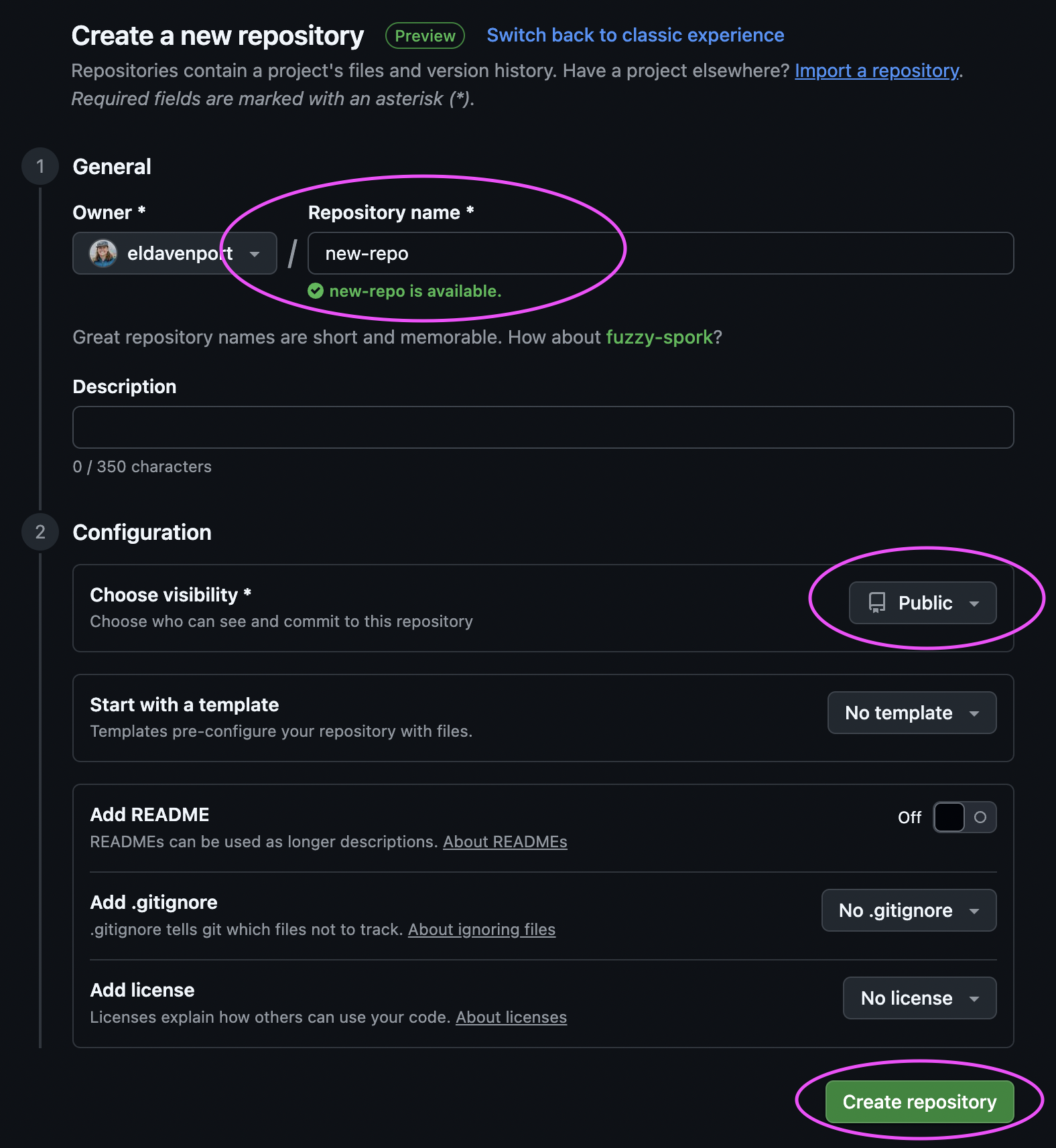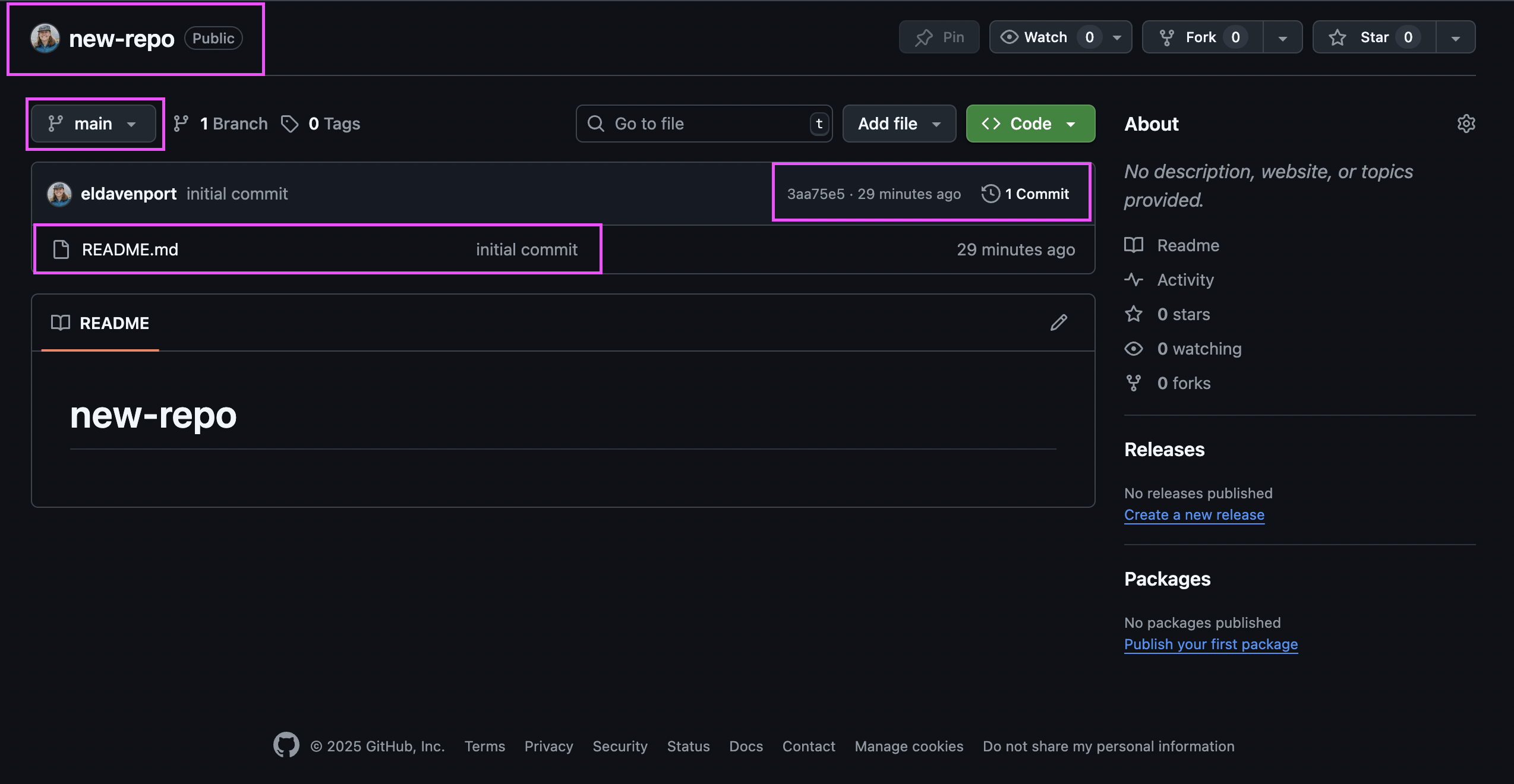Navigating GitHub¶
Create a new repository on GitHub¶
Use your web browser to navigate to your GitHub profile and go to your repositories.

Create a new repository.

Give the repo a name (typically you would use the same name as your local repo). Decide if you want the repo to be public or private. Do not add any default files since you have already given it a README.md.

The empty repo gives you instructions on how to push existing files.

Once you have pushed your code, refresh your page to see the new repo!

Note how the online interface contains tons of info, including: Who authored the last changes, when were the last changes made, what files do we have, what is our change history, is the repo public, etc.